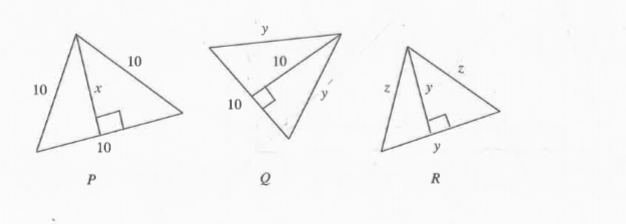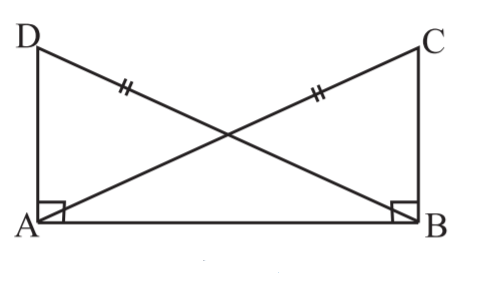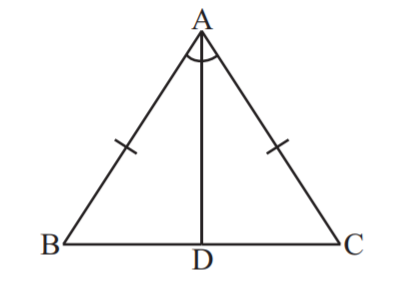In the figure AB and CD bisect each other at O. (i) state the three pairs of equal parts in two triangles AOC and BOD (ii) which of the following statements are true? (a) △AOC≅△DOB (b) △AOC≅△BOD
∠AOCand∠BOD
CO=DO
∠COA=∠DOB
AO=BO
∠AOc≅∠BOD
∠AOC is not≅∠DOB
AO≠DO
Similar Questions
In the figure AB and CD bisect each other at O. (i) state the three pairs of equal parts in two triangles AOC and BOD (ii) which of the following statements are true? (a) △AOC≅△DOB (b) △AOC≅△BOD
View SolutionState which of the following statements are true and which are false :
Every equilateral triangle is an isosceles triangle .
View Solution
Knowledge Check
ΔDEF is divided into two triangles ΔDEMandΔDFM of equal areas. Which of the following statement is true ?
AΔDEFandΔDFM have equal bases.Bar (ΔDEM)=13 ar (ΔDEF)CMis the mid - point of side EF.DΔDEMandΔDFM and congruent.Which of the following must be true?
(I) The area of triangle P.
(II) The area of triangle Q.
(III) The area of triangle R.
 AI = II = IIIBI lt II lt IIICI gt II lt IIIDIII lt I lt II
AI = II = IIIBI lt II lt IIICI gt II lt IIIDIII lt I lt II
In a triangle ABC , if AB , BC and AC are the three sides of the triangle , then which of the following statements is necessarily true ?
View SolutionState which of the following statements are true and which are false :
Ever isosceles triangle must be an equilateral triangle.
View SolutionIn Fig 7.31, DA⊥AB,CB⊥ABandAC=BD. State the three pairs of equal parts in ΔABCandΔDAB. Which of the following statements is meaningful?
(i) ΔABC≅ΔBAD
(ii) ΔABC≅ABD

View SolutionState which of the following statement are true and which are false:
(i) A scalene triangle has three lines of symmetry.
View SolutionIn Fig 7.31, DA⊥AB,CB⊥ABandAC=BD. State the three pairs of equal parts in ΔABCandΔDAB. Which of the following statements is meaningful? (i) ΔABC[_≅?]ΔBAD (ii) ΔABC[_≅?]ABD
View SolutionIn the given figure, AB=ACandAD is the bisector of ? BAC. (i) State three pairs of equal parts in triangles ADBandADC. (ii) Is ΔADB≅ΔADC ? Given reasons. (iii) Is ∠B=∠C ? Given reasons

View Solution
